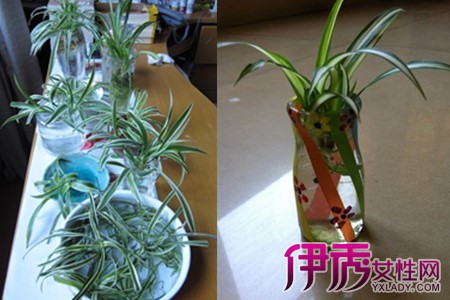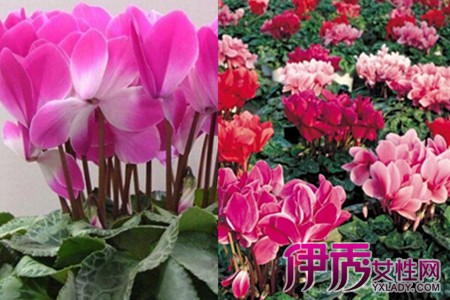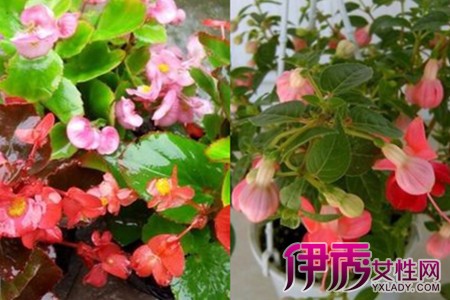Teach you the method of hydroponic culture of hanging orchids is clean, beautiful and can also purify the air.

Modern people are more willing to spend more energy, time and money on interest, for example, people are willing to raise some flowers and grass after work and study. Cymbidium is widely recognized as an ornamental plant with elegant taste, elegant shape, easy feeding and strong air purification ability. it is one of the plants that many families will choose to plant.
For Cymbidium, there are two cultivation methods: soil culture and water culture. Soil culture, as a traditional culture method, has occupied most of the planting history of Cymbidium, but with the birth of hydroponics, the disadvantage of soil culture that it is not easy to manage and dirty the floor is gradually revealed. Therefore, for modern people, clean, easy to take care of hydroponics is the best choice for indoor cultivation, and this planting method can also let people appreciate the white, full and dense roots of Cymbidium.
Let's take a look at the specific cultivation process of hydroponic Cymbidium.
Only when you are fully prepared before doing something, you will not be in a hurry in the process. So before we officially start cultivation, let's take a look at the tools and materials we need to prepare: small scissors, bottles, decorative pots, glass balls, cold boiled water, prepared nutrient solution, healthy orchids.
The first point: choose hanging orchids. It is best to choose a large plant of Cymbidium to grow in hydroponics, because this kind of plant is more suitable for hydroponics and easier to manage. When the plants selected by this method are put into water, young roots will sprout in about 5 days. In addition, it is best not to choose silver hanging orchid for hydroponics.
The second point: water is used for hydroponics. The water used in hydroponics is fastidious, it is best to use cold boiled water, this kind of boiling water can make the root system of Cymbidium grow white and tender.
The third point: the choice of containers. Compared with soil culture, in addition to being easy to take care of and will not get dirty, the biggest advantage of hydroponic hanging orchid is that the white, full and dense root system can be seen through water, which is very beautiful in green and white. Therefore, for the choice of container materials, whether ceramic or peat or plastic is not the best choice, the best choice is transparent, heavy, textured glass.
The fourth point: deal with hanging orchids. If the final choice is not the kind mentioned in the first point, but the hanging orchid dug directly from the soil, then it will take some treatment to grow well. First of all, rinse the soil on the excavated orchid with gentle running water; then deal with the roots, the old and rotten roots need to be cut off with scissors; finally, deal with the leaves and remove the diseased leaves, rotten leaves and semi-withered leaves without harming the whole leaves.
The fifth point: fixed hanging orchid. Place the treated orchid in a glass container of your choice and fix it with some glass balls or good-looking pebbles. The fixed point is to make sure that the orchids are vertical without any deviation. At the same time, when fixed, we should be careful not to let glass balls and stones hurt the young roots of Cymbidium, but also to ensure that the roots are evenly distributed.
The sixth point: change water and nutrient solution. Nutrient solution is the best choice for hanging orchid special nutrient solution, the market is very easy to buy, of course, you can also configure your own. Generally speaking, the cycle of changing water and changing nutrient solution is about 7 days, but it can also be adjusted according to the specific conditions of the orchid. In addition, if you find some sticky synovial fluid on the root, be sure to wash the root thoroughly.
Sharing the methods and taboos of hydroponics in Phnom Penh
Hanging orchid has become the darling of office workers because of its green appearance and air purification function. In particular, the Phnom Penh orchid in the hanging orchid is loved by people because of its unique and beautiful appearance. Recently, I saw many people asking how to apply hydroponics to Phnom Penh orchids. It is true that hydroponic plants are cleaner and more ornamental than those grown in soil. So I also tried hydroponics early, and experience told me that Phnom Penh can be hydroponically cultivated. My Phnom Penh Cymbidium has been hydroponically cultured for more than a year and is growing well. Now I would like to share my experience and steps of hydroponics with you.
To carry out hydroponic culture, you need to have a hydroponic container, which can choose either glass or ceramic bottles according to your habits and preferences, but if there is no bottom hole in the container. With the container, we choose plants that are suitable for hydroponic culture. We cannot have rotten plants in the roots. Moreover, we need to clean up the old roots and rotten roots of the selected plants, and cut off leaves with diseases and insect pests. Under normal circumstances, we need to leave six to ten healthy leaves.
After preparing the container and plant, wash the soil from the plant root and plant it carefully in a plastic sieve filled with pottery or stone rice, keeping the upright root of the orchid into the water bottle.
Next, put the planted orchids indoors and change the water every two or three days. When the new root is three centimeters long, add the nutrient solution to the clear water, but do not irrigate a large amount of nutrient solution, because a large amount of nutrient solution will breed a large number of molds and bacteria, causing rotting roots. At the beginning of hydroponics, there will be rotten parts in the roots of the hanging orchids, which need not be worried, as long as they are cut off and sterilized when changing the water.
According to my experience of hydroponics, when hydroponics are carried out, you should not put some craft products and furnishings in the hydroponic container, which is not conducive to the growth of the orchid. If you have to beautify the container, put some pebbles and other natural stones, both beautiful and will not hurt the orchid.
At present, the hanging orchid cultivated by the secondary method at home is growing well, the leaves are fat and strong, the glass bottle with a trace of green makes people look relaxed and happy, but also envious of the friends who come to watch, have asked for advice on the methods of cultivation. During this period, because I was eager to take good care of the orchid, I sprayed it too much nutrient solution, which led to the sudden signs of withered and yellow leaves. Fortunately, I found the reason in time, so I didn't lose my hanging orchid because of overnutrition. Therefore, it is suggested that when hydroponic hanging orchid is not sprayed as much as possible, it should be sprayed two or three times a week, and it must be diluted.
The specific methods and steps of hydroponics are introduced, and the maintenance of orchids after hydroponics is a common and popular one in our family flowers. The leaves of the orchid are slender, crisp and soft. Hanging orchid is a good foliage plant, placed at home can add a fresh flavor, but also can purify the air. Today, I will take you to understand the specific methods and steps of hydroponic culture of Cymbidium.
1. Select a container
Any container that can hold water can be used to raise orchids, it is best to use transparent utensils to raise them, and you can enjoy the dazzling white roots in the water. The glass cups, teacups and mineral water bottles around you are all containers of water-raised orchids, which are both economical and beautiful. The containers of water-raised orchids can be single-layer or double-layer. The single-layer container is made of glass bottles and plastic bottles without bottom holes and planted directly on the hanging orchid. In the double-layer container, the plastic screen is taken as the upper layer, and the lower layer is a bottomless bottle. The hanging orchid is planted in the upper plastic screen and the root of the hanging orchid extends into the lower bottle.
2. Remove the graceful potted orchid from the pot and wash the soil.
3. Cut off the old roots and withered yellow leaves
4. Insert it into the plastic sieve and fill it with blue stone or Maifan stone to increase the permeability, which can also fix the plant. Then put it in a wide-mouthed transparent glass bottle and raise it in water.
Cymbidium can also be raised separately in water. Specific steps are as follows:
The main results are as follows: 1. The small hanging orchids with aerial roots on the creeping stems are cut off from the mother plant and raised in water.
2. new snow-white roots sprouted after a few days.
Maintenance and management
1. When raising the orchid in water, just let the bottom 1/3 of the root system touch the surface of the water. Do not put all the white fleshy roots of the orchid into the water, otherwise the water will cause the root to rot.
2. the hanging orchid that has just been put into the water is changed once a day, and the frequency of changing water is reduced after taking root.
3. Putting it in a place with good light is beneficial to the germination of new roots.
The above are the specific hydroponic methods and steps of the hanging orchid that I have sorted out. I hope it can be helpful to the majority of flower friends. Please continue to pay attention to the succulent flower bed and learn more about flower conservation.
- Prev

How to deal with the yellowing of cyclamen leaves is very important to master these skills.
Cyclamen is a very beautiful ornamental flower, many people will grow this plant at home. But in normal maintenance, carelessness will make its leaves turn yellow. If you want to keep it well, you have to know some knowledge.
- Next

Understand the culture methods and matters needing attention of begonia in four seasons. Flowers are more beautiful in this way.
Although this kind of flower is not expensive, it is deeply loved by flower lovers because it can blossom in all seasons. Many people will say that it is always not good to cultivate four seasons begonia. The editor below will share the experience of cultivating four seasons crabapple to you.
Related
- Fuxing push coffee new agricultural production and marketing class: lack of small-scale processing plants
- Jujube rice field leisure farm deep ploughing Yilan for five years to create a space for organic food and play
- Nongyu Farm-A trial of organic papaya for brave women with advanced technology
- Four points for attention in the prevention and control of diseases and insect pests of edible fungi
- How to add nutrient solution to Edible Fungi
- Is there any good way to control edible fungus mites?
- Open Inoculation Technology of Edible Fungi
- Is there any clever way to use fertilizer for edible fungus in winter?
- What agents are used to kill the pathogens of edible fungi in the mushroom shed?
- Rapid drying of Edible Fungi

